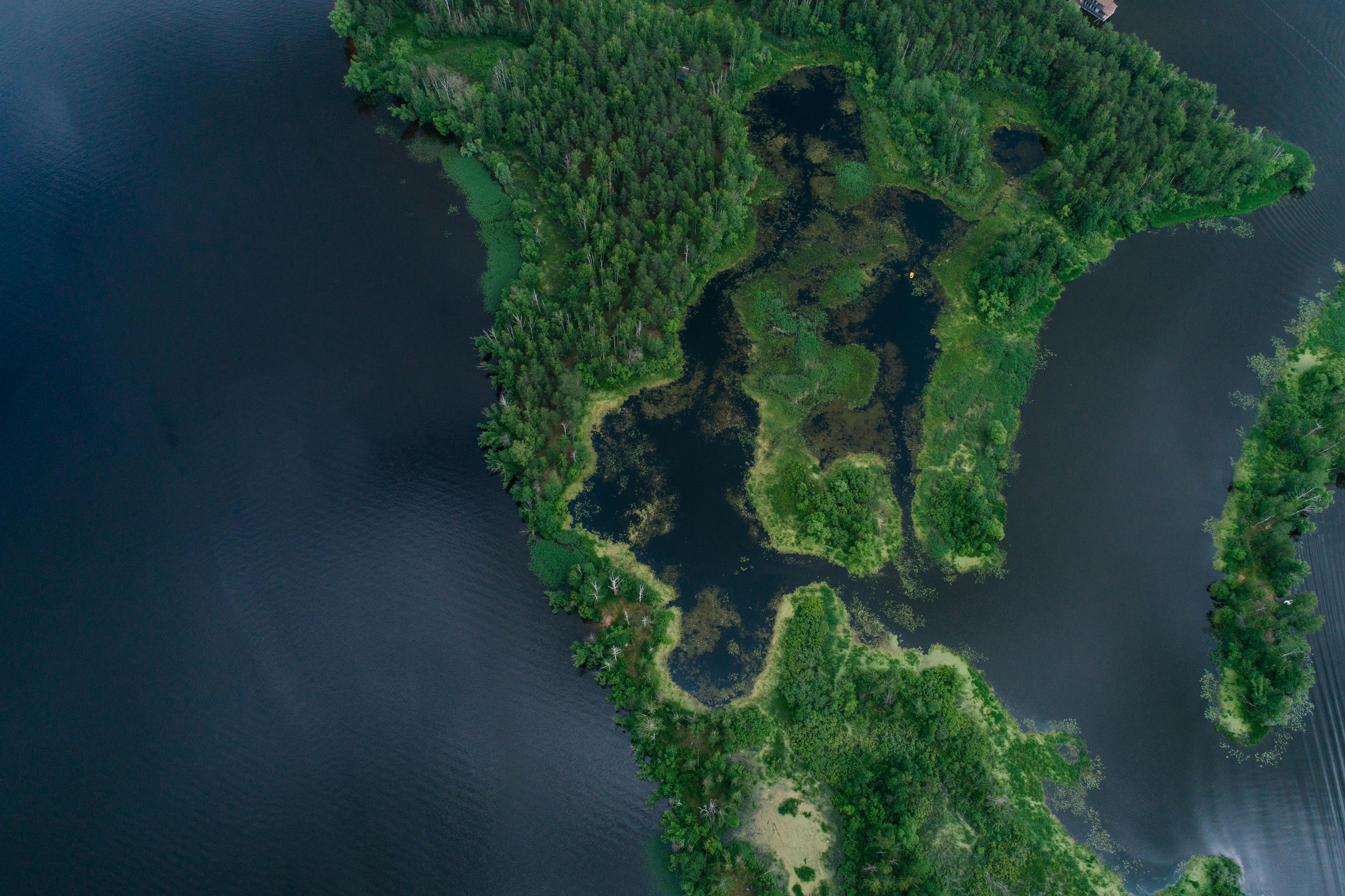Earth is a unique planet in our solar system, capable of sustaining large bodies of water. Its vast oceans, rivers, and lakes are essential for all life on the planet. What is it about Earth that allows it to maintain these bodies of water? This article will explore some of the key factors that contribute to this phenomenon. From the composition of its atmosphere to its unique combination of landforms, Earth’s conditions are ideal for sustaining and preserving large bodies of water.The atmosphere of Earth is composed of 78% nitrogen, 21% oxygen, and 1% other gases. It also contains trace amounts of water vapor, carbon dioxide, and other gaseous molecules. The atmosphere protects life on Earth by absorbing ultraviolet radiation from the Sun and regulating the amount of heat retained by the planet. It also reduces temperature extremes between day and night and helps to moderate the planet’s climate.
Role of Evaporation and Condensation in Maintaining Water
Water is one of the most important resources for life on earth. It is essential for sustaining life, and its cycle is part of a complex system that constantly replenishes the water supply. Evaporation and condensation play an important role in this cycle, providing a continuous flow of fresh water to all parts of the earth.
Evaporation is the process by which liquid water turns into vapor or gas. This happens when the sun’s energy warms up the surface of bodies of water, like oceans, lakes, and rivers. As the molecules in the liquid absorb energy from the sun, they move faster and faster until they escape into the atmosphere as vapor. This vapor then rises high into the sky where it condenses into clouds.
Condensation is a process that occurs when water vapor molecules cool down and turn back into liquid form. This often happens when air temperatures drop due to high elevation or cooler temperatures at night. As clouds form, they release droplets of condensed water that can fall back to earth as rain or snow. This precipitation replenishes bodies of water on land as well as underground aquifers which provide drinking water for humans and animals alike.
The evaporation-condensation cycle is vital for maintaining an adequate supply of clean, fresh water on our planet. Without this cycle, there would be no rainfall or snowfall to replenish our rivers, lakes, and oceans – leading to a decrease in biodiversity as well as shortages in drinking water for humans and other living creatures alike.
Evaporation also plays an important role in regulating global temperatures by transferring heat from land surfaces to the atmosphere through convection currents created by rising warm air masses over regions with bodies of water like oceans and lakes. The evaporated moisture then gets released back into the atmosphere during condensation which helps cool down regions with high temperatures during summer months.
In conclusion, evaporation and condensation are essential processes that allow us to maintain a healthy balance of fresh clean water on our planet’s surface while also helping regulate global temperatures through convection currents created by rising warm air masses over bodies of water like oceans and lakes.
Gravity
Gravity is the force that attracts two objects towards each other. It is one of the four fundamental forces of nature, and it has a great influence on the motion of objects in our universe. The Earth’s gravity exerts a pull on all objects near its surface, which causes them to fall towards the ground. This pull is what allows us to stand on the ground and move around freely. It also keeps our planet in orbit around the sun, and keeps satellites in orbit around Earth. Without gravity, our universe would be a very different place!
Atmospheric Pressure
Atmospheric pressure, also known as air pressure, is the pressure exerted by the weight of air in Earth’s atmosphere. This pressure affects many things, including weather patterns and even how high airplanes can fly! Atmospheric pressure decreases with altitude; that’s why airplanes need to pressurize their cabins or people could get sick from lack of oxygen at high altitudes. Atmospheric pressure also has an effect on water vapor and how it evaporates from surfaces, which can influence humidity levels in the air.
Earth’s Surface Temperature
Earth’s surface temperature is a measure of the amount of energy that is emitted or reflected back into the atmosphere. It is measured as an average over a period of time and space. The average temperature of the Earth’s surface has been increasing since the industrial revolution, due to increased emissions of greenhouse gases such as carbon dioxide and methane. This increase in temperature has been linked to changes in global climate patterns, including more frequent heat waves, stronger storms, longer droughts and rising sea levels.
The Earth’s surface temperature is determined by several factors, including air temperature, cloud cover, precipitation and humidity. Changes in these factors can affect the amount of energy that is absorbed by the Earth’s surface from the sun and emitted back into space. For example, if there are more clouds in the atmosphere then less energy from sunlight will reach the ground and more heat will be reflected back into space. Similarly, if there is less cloud cover then more energy will be absorbed by the Earth’s surface, leading to higher temperatures.
In addition to natural factors such as changes in cloud cover and air temperature, human activities can also contribute to changes in Earth’s surface temperature. Burning fossil fuels releases large amounts of carbon dioxide into the atmosphere which can act like a blanket around the Earth trapping heat within it. This process of trapping heat is known as the ‘greenhouse effect’ and it can lead to higher global temperatures.
Monitoring and understanding changes in global temperatures are important for predicting future climate change and its potential impacts on ecosystems and human societies around the world. Studying Earth’s surface temperature helps inform decision making related to climate change mitigation strategies such as reducing greenhouse gas emissions or developing adaptation measures for vulnerable communities.
Solar Energy as Heat Source for Earth
Solar energy has become an important source of heat for the planet. It is a renewable energy source, which means it can be used without ever running out. As the Earth’s population grows, so does the need for renewable energy sources such as solar. Solar energy is also a clean energy source, meaning that it does not produce any pollution or greenhouse gases. This makes it an ideal choice for those looking to reduce their environmental impact.
Solar energy is used in many ways to provide heat for homes and businesses. Solar thermal systems use the sun’s heat to warm water or air in homes and buildings. This can be done through solar panels or solar collectors that absorb the sun’s rays and convert them into usable heat. Solar hot water systems are also available, which use the sun’s rays to directly heat water for domestic use.
Solar-powered heating systems are becoming increasingly popular due to their cost-effectiveness and efficiency. They are relatively easy to install and can provide efficient heating solutions with minimal maintenance costs. In addition, they do not require a large upfront investment and can be used on almost any type of building or structure, including commercial premises and residential homes.
The use of solar energy as a source of heat is becoming more widespread due to its environmental benefits and its cost-effectiveness compared to other forms of heating systems. As more people become aware of the importance of using renewable sources of energy, solar-powered heating solutions will likely become even more popular in the coming years.

The Hydrological Cycle
The Hydrological Cycle is the movement of water through the environment. It involves the transfer of water from the Earth’s surface to the atmosphere and back to the surface in a continuous cycle. Water is transferred between different parts of the environment in various forms, such as liquid, solid or vapor. The Hydrological Cycle plays an important role in maintaining the balance of water on Earth and helps to regulate climate and weather patterns.
The cycle begins with evaporation from bodies of water such as lakes, rivers and oceans. As the sun heats up these bodies of water, some of it evaporates into vapor form. This vapor then rises up into the atmosphere where it cools down and condenses into clouds. As these clouds move across the sky, they are eventually forced to release their moisture in either rain or snow form, which falls back to Earth’s surface. This precipitation then collects on land or flows back into bodies of water completing a full cycle.
The Hydrological Cycle also plays an important role in providing fresh drinking water for humans and other living organisms. When precipitation falls onto land it eventually makes its way into nearby rivers, lakes or groundwater sources that can be used for drinking and other activities. Additionally, this cycle helps to replenish vegetation by providing them with much-needed moisture that allows them to grow and thrive in different environments around the world.
Without this cycle there would be no life on Earth as we know it today – making it one of nature’s most important processes that continues to keep our planet alive and functioning properly.
The Role of Oceans in Maintaining Water
Oceans play a vital role in regulating the Earth’s water cycle and climate. Oceans cover more than 70% of the Earth’s surface and contain 97% of the Earth’s water, making them one of the most important sources of fresh water. The oceans also absorb much of the Sun’s heat, transferring it around the world through ocean currents. This helps to maintain a stable climate, preventing sudden shifts in temperature or weather patterns.
Oceans also help to store and manage large volumes of water, which is essential for maintaining environmental balance. Oceans act as giant reservoirs that can absorb excess rainfall from rivers and other freshwater sources, as well as releasing that stored water back into rivers when there is a deficit in rainfall. This helps to prevent flooding and drought by providing a buffer against extreme weather conditions.
Another important role played by oceans is evaporative cooling. Evaporation is an important component of the hydrological cycle, as it occurs when warm ocean waters evaporate into the atmosphere. When this happens, it cools down the air and causes precipitation such as rain or snow. This helps to maintain an equilibrium between fresh water sources on land and saltwater sources in oceans. The cooling effect also helps to regulate temperatures on land and prevents drastic changes in climate patterns.
Finally, oceans are home to a wide variety of marine life which play an important role in maintaining global biodiversity by providing essential nutrients for plants and animals on land through their waste products, such as nitrogen and phosphorus-rich fertilizers which are essential for plant growth. Marine life also helps to regulate carbon dioxide levels in the atmosphere by absorbing large amounts of CO2 from air which would otherwise contribute to global warming if left unchecked.
In conclusion, oceans are essential for maintaining water balance across the planet by playing a vital role in regulating temperature and managing large volumes of water through evaporation and ocean currents. They also provide a home for many species that help maintain global biodiversity while providing vital nutrients for plants on land.
Role of Weathering and Erosion in Maintaining Water
Water is one of the most important resources on Earth, and it is essential for all life on our planet. Weathering and erosion play a critical role in maintaining water supplies by breaking down rocks, minerals, and organic matter into smaller components which can be transported by water. This process helps to create new soil and sediment that can be used to replenish aquifers and other water sources. Weathering occurs through physical or chemical processes, such as wind, rain, ice, and temperature changes that cause rocks to break down into smaller particles. Erosion is the process of transporting these weathered materials over long distances by wind or water.
The combination of weathering and erosion allows for the slow but steady release of water from underground sources. This process helps maintain freshwater supplies in a variety of ways. First, it helps to reduce the amount of runoff from land surfaces that would otherwise enter waterways too quickly, causing flooding or other problems. Second, it creates new soil particles which can absorb more water than existing soil particles. Finally, it replenishes aquifers with new water which can be used for drinking or irrigation purposes.
Weathering and erosion also help to maintain biodiversity through the creation of new habitats for plants and animals. As weathered materials are transported away from their original location they become deposited in different areas where they can create habitats suitable for different species as well as providing nutrients for plant growth. In this way weathering and erosion help to create an ever-changing environment that supports a diverse range of life forms.
Overall, weathering and erosion play an important role in sustaining our planet’s freshwater resources by slowly releasing stored water back into rivers, lakes, and aquifers over time period; creating new soils; providing nutrients for plants; and creating diverse habitats for animals. Without this natural process our planet would not have the abundance of water resources we have today nor would we have the same level of biodiversity that is essential for a healthy environment.

Conclusion
Earth is a unique and complex planet, capable of maintaining and sustaining bodies of water on its surface. Its atmosphere, oceans, landforms, and hydrological cycle all work together to keep water in a liquid state on Earth’s surface. The presence of liquid water is critical for the survival of life on Earth. Without it, life as we know it could not exist. Human activities have had an impact on the environment and have disrupted the hydrological cycle, leading to climate change and changes in water availability. To protect Earth’s precious freshwater resources, we must be mindful of our actions and work towards preserving the balance between human activities and environmental protection.
Ultimately, the combination of Earth’s unique characteristics makes it a remarkable planet capable of sustaining liquid bodies of water in its environment. It is up to us as citizens to ensure that this continues to be true by reducing our impact on the environment and protecting Earth’s precious resources for future generations.

